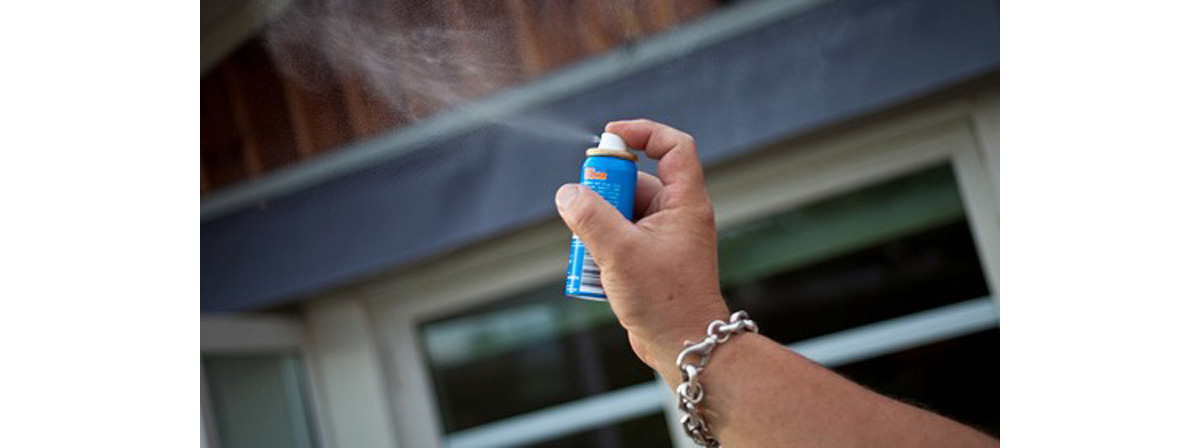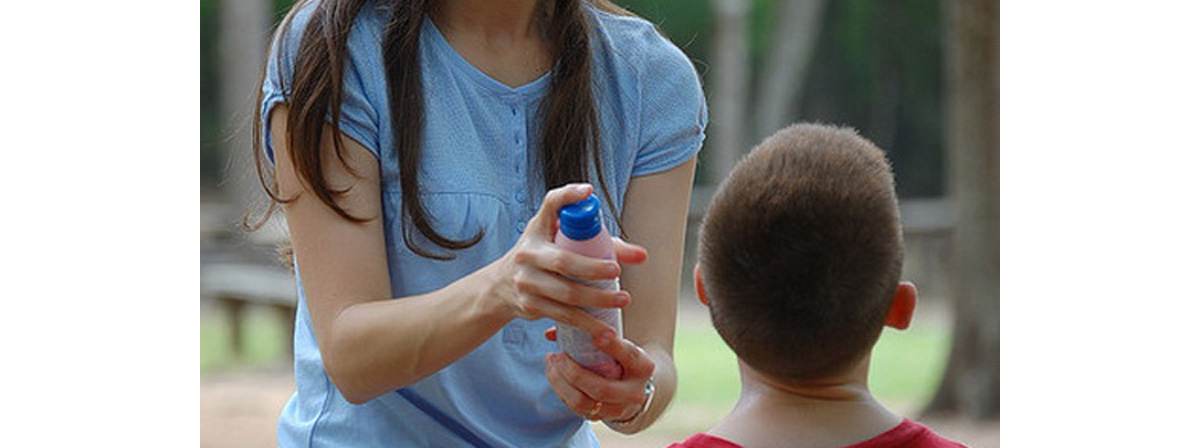Mosquitoes and ticks are active again! Many people struggle to find bug repellents that really work. DEET has been shown to be extremely effective.

Mosquito Bites
To many people, mosquito bites are nothing but a minor annoyance. These people find that mosquitoes don't really target them that much, and when they do get bites, they are small enough to ignore altogether. Folks who fall into this category might buy citronella candles and other repellents when they happen to remember, or they may get by without ever buying a mosquito repellent.
Only female mosquitoes actually feed on blood. They choose a person using a combination of factors, including pheromones and the amount of carbon dioxide the person is exhaling. The red bump and itching that results afterwards isn't actually caused by the mosquito's bite itself, but by the immune system's reaction to the mosquito's saliva.
Over time, the immune system becomes sensitized to mosquito saliva and develops a more effective reaction. This means that little kids often have more severe symptoms than adults do. Humans of all ages who are especially sensitive to mosquito bites may develop large bumps and thus larger areas that itch. The skin can become extremely red and inflamed, and in severe cases the victim can even develop urticaria (hives), a lymph-system inflammation or anaphylactic shock!
Ticks And Lyme Disease
Ticks pose a danger to everyone. The tiny arachnids are present on all continents except Antarctica, and are potential carriers of Lyme Disease everywhere though some areas are considered to be more high-risk than others.
You may not notice a tick crawl up your leg, or your child's, and because these blood-sucking creates are so small and like to latch on in warm areas of the body, like skin creases, you may never notice that you or your children served as a meal for a tick.
The characteristic bull's eye rash is the most obvious early symptom of the disease. Noticing it enables you to seek treatment early on, but not everybody who develops Lyme Disease is that lucky. Later symptoms include flu-like symptoms, loss of muscle tone, meningitis (in turn, this can manifest as headaches), encephalitis, loss of cognitive function, arthritis and in rare cases even death.
You can put strategies in place that will minimize your risk of Lyme Disease, by maximizing your chance of catching ticks before they latch on (and those who are interested can check my article about Lyme Disease in the links box below). The bottom line is, however, that anyone who spends any time in natural environments such as parks, forests, and gardens could be bitten by a tick and develop Lyme Disease. Isn't it best to repel ticks by using an effective bug repellent?
Why Use DEET?
DEET — chemical name, N,N-diethyl-meta-toluamide — is the active ingredient you'll find in many bug repellents. It works against mosquitoes and ticks as well as other creepy crawlies you'd rather avoid like chiggers and fleas.

DEET was developed by the United States military following nasty encounters of a whole different kind during World War II, when US troops were engaged in jungle warfare. It was approved as an active ingredient in bug repellents for civilian use in 1957. Currently, around 140 different DEET-containing products are registered with the Environmental Protection Agency.
Products than use DEET as their active ingredients do not kill bugs, but rather repel them. These products are suitable for use against ticks and mosquitoes, and protects against tick- and mosquito-borne diseases including Lyme Disease, Dengue Fever, and malaria.
There have been some concerns about the risk of DEET use, however research shows that it is safe for use by both adults and children as long as certain instructions are followed — not only that, DEET has been shown to be an extremely effective mosquito repellent when compared to other products.
Your bug repellent will always come with a package insert that informs you of the risks and provides instructions on correct use. Never simply discard these package inserts, and take a moment to read them to ensure you do not place yourself or your family members at risk.
How To Use DEET-Containing Bug Repellents
In order to be effective, your product needs to contain a DEET concentration of at least 30 percent in adults. Fifty percent concentrates are recommended for those who travel to tropical areas where there is a risk of malaria and other serious mosquito-borne diseases.
It is not necessary to use a higher concentration (though such products are on the market), but DEET is most effective when applied directly to skin — as opposed to clothes, in combination with sun screens, or on skin underneath clothes. Research shows that it's the smell of the chemical that drives mosquitoes away, and localized products such as wrist bands are not effective.
You do not need to use a large amount of DEET for the product to be effective. Stick to small amounts on parts of exposed skin. If you use a spray, never apply it indoors and take care not to inhale. Never spray DEET directly into your face or apply it around your eyes. If you use a gel or cream, wash your hands after application. Also wash the product off after use, and wash any clothes that came into contact with DEET before wearing them again.
Remember, mosquitoes are most effective from dawn to dusk. In most cases, you will not need to use DEET all day long. Venturing out into nature or visiting tropical areas are the exception. You want DEET to protect you against ticks and mosquitoes in these cases, but you can have a shower after you return inside.
A Closer Look At DEET For Children, And Its Potential Risks
DEET And Children
DEET is approved for use on children with no age restrictions in the United States. The American Academy of Pediatrics has found products containing between 10 and 30 percent DEET to be safe for children.

Despite this, there are some concerns and international opinions vary as well.
If you do choose to use DEET on your children — because you are worried about Lyme Disease, your child has severe reactions to mosquito bites, or you are traveling to tropical areas, for instance — make sure you take the following precautions in addition to the general precautions:
-
Do not allow your child to apply DEET himself
-
Never apply DEET near your child's hands, eyes, or mouth
-
Watch out for reactions, discontinue use immediately if you see any, and consult your pediatrician
-
Never use DEET on infants under two months of age
-
Do not apply DEET more than three times a day, and only once for babies under 24 months
-
Do not apply products with more than 30 percent DEET
So, What Are The Risks?
Diseases carried by ticks and mosquitoes can be extremely serious, and severe reactions to mosquito bites can have far-reaching consequences as well.
Exactly what are the risks that we briefly mentioned earlier? Let's take a look:
-
DEET can irritate the skin, in some cases severely.
-
It is likely that DEET can lead to seizures in some people.
-
DEET was found to affect the function of a key central nervous system enzyme, acetycholinesterase. It is possible that the chemical interacts with other insecticides in a dangerous manner.
-
A study found that "Everglades National Parkemployees having extensive DEET exposure were more likely to have insomnia, mood disturbances and impaired cognitive function than were lesser exposed co-workers”.
The Environmental Protection Agency reported 14 to 46 cases of potential DEET-associated seizures, including four deaths while conducting the DEET Reregistration Eligibility Decision (RED). The Agency says that "it does appear that some cases are likely related to DEET toxicity", but quickly added that the “likely seizure rate” is very low. Around a third of the US population uses DEET each year, and the estimated seizure rate is approximately one in 100 million users.
Do the benefits of using DEET outweigh the risks? That depends on the likelihood that you and your family are exposed to serious bug-borne diseases as well as an individual's adverse reactions to bug bites. DEET works, but it also comes with a slight chance of very serious reactions. In the end, it is up to individuals to weigh one risk against another, and decide which is more acceptable.
- Photo courtesy of Håkan Dahlström by Flickr : www.flickr.com/photos/dahlstroms/4870774159/
- Photo courtesy of Tyler Lewis by Flickr : www.flickr.com/photos/relakkusu/3671363712/
- Photo courtesy of Stacy Braswell by Flickr : www.flickr.com/photos/stacybraswell/2461945790/


Your thoughts on this